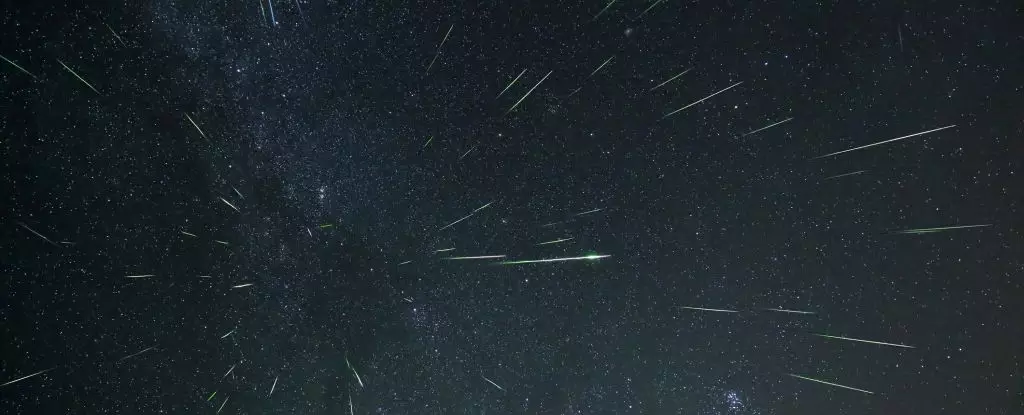As spring unfolds, lovers of the cosmos are in for a delightful treat. The months of April and May usher in two of the most captivating meteor showers, offering a perfect opportunity for stargazers and nature enthusiasts to connect with the wonders of the universe. The Lyrid and Eta Aquariid meteor showers stand out not just for their beauty but also for the chance they present—a chance to witness the fleeting brilliance of cosmic debris as it burns through our atmosphere.
The Lyrid meteor shower will light up the northern hemisphere from April 17 to April 26, with its peak occurring on the nights of April 21 to 22. This spectacle is a gentle reminder of the vast universe we inhabit, as Earth zips through a trail of remnants left by comet C/1861 G1 (Thatcher), on its remarkable 422-year journey around the Sun. The elegance of the Lyrids, coupled with their accessibility—requiring only a blanket, clear skies, and keen observers—makes this an unmissable experience.
The Lyrids: A Glimpse of History and Nature
The history of the Lyrids is as rich as their visual splendor. Named after the constellation Lyra, where their radiant point is located, these meteors are a fusion of ancient astronomy and the raw beauty of nature. Imagine lying under the starry expanse while pieces of ancient comet dust streak across the sky, illuminated by the fire of their descent. People have been observing this meteor shower for over 2,700 years, linking us to our ancestors who also marveled at the same cosmic wonders.
When looking up at the night sky during the peak of the Lyrids, ideally timetabled before moonrise on April 21, spectators may witness up to 15 meteors per hour. Unfortunately, the presence of a waning Moon will dilute the visibility of some meteors. Yet, don’t let this discourage you; even a diminished display can ignite the imagination and stir a profound appreciation for the cosmos.
The Eta Aquariids: A Southern Hemisphere Spectacle
Moving into May, the Eta Aquariids take center stage, illuminating the southern hemisphere from April 20 through May 21, with its mesmerizing peak on May 2 to 3. This meteor shower, which originates from Halley’s Comet—one of the most well-known comets in human history—poses a unique viewing opportunity. Halley’s Comet graces our skies once every 76 years, so witnessing the Eta Aquariids becomes not just a delightful pastime but a historic moment in observational astronomy.
Unlike the Lyrids, the Eta Aquariids promise a more generous display, especially for those residing in the southern tropics. Observers can expect to see around 50 to 60 meteors per hour during the peak, painting a stunning picture against the nighttime backdrop. For viewers in the north, the display is somewhat less impressive, as conditions will yield no more than 20 meteors per hour.
Prepare for Your Celestial Adventure
To maximize your meteor-watching experience, preparation is key. Choose your viewing location wisely—urban areas with bright lights can severely hamper visibility. Instead, select a darker area free from light pollution, ideally with a clear, unobstructed horizon. Additionally, both meteor showers require no special equipment; your eyes alone are the best tools for appreciating the fleeting beauty of these cosmic events.
Both the Lyrids and Eta Aquariids serve as beautiful reminders of our place in the vast universe. As we rush through our daily lives, these moments of celestial wonder encourage us to pause, reflect, and find solace in the larger tapestry of existence. With a sprinkle of determination, patience, and a little luck with the weather, you can be a part of an ancient and ongoing tradition that celebrates the breathtaking phenomenon of meteor showers. So grab that blanket, gather some friends or family, and prepare for a night under the stars where nature’s light show unfolds just for you. Happy stargazing!


Leave a Reply